Top News
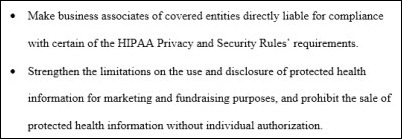
HHS Secretary Kathleen Sebelius announces the final omnibus rule that substantially changes HIPAA regulations for the first time in 15 years. It (a) expands HIPAA’s reach to business associates such as contractors who will now be directly liable; (b) increases penalties to a maximum of $1.5 million per violation; and (c) clarifies the HITECH breach notification requirements. Patient provisions include (a) the right to request their own information in electronic form; (b) allowing cash-paying patients to instruct providers to not share their treatment information with their insurance company; and (c) limiting the use and sale of a patient’s information without their permission. The 563-page document has considerable detail including a discussion of feedback received, so feel free to leave a comment with nuggets you run across.
Reader Comments
From Digital Probe: “Re: headline. One of the rags ran a headline all day saying Health Information Exchange over a story about health insurance exchanges.” Indeed they did, and they’ve since quietly corrected their mistake, I see. I’m slightly mystified by their confusion, but even more so at their running a lengthy article on health insurance exchanges in an IT publication intended for a provider audience who I can’t image cares one iota about them.
From Android Powered: “Re: TPD’s list of iPhone apps. Anybody want to share their list for Android?”
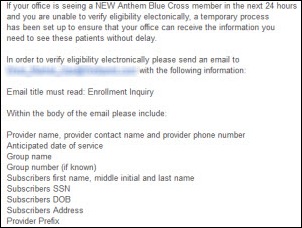
From Boy Gary: “Re: Anthem CA Blue Cross. Their electronic eligibility system is down, so they e-mailed providers telling them to e-mail subscriber and patient information to check eligibility. They’re asking for the subscriber’s Social Security number to be sent by unsecured e-mail.” That’s such a bad idea that I’ll overlook their less-egregious omission of the apostrophes in the possessive occurrences of “subscriber’s.” They get credit for at least putting a manual step in place to help providers get paid.
From The PACS Designer: “MakerBot at CES. An addition to MakerBot’s product line that TPD posted about was introduced at the Consumer Electronics Show in the form of a 3D plastic design system. The MakerBot Replicator 2X 3D printer uses melted plastic to form objects based on available 3D pattern software. So, for example you want a new coffee mug, you use your pattern design software to create the desired result. Maybe one of our adventurous readers will buy the Replicator to design a new shoe for Inga!” Pretty fascinating – the $1,749 device can replicate household hardware parts, antiques, and who knows what else.
From Lumpy Rutherford: “Re: former NextGen President Pat Cline. He has resigned from the QSI board effective immediately and on his LinkedIn page lists himself as CEO of newly incorporated Delaware corporation Lightbeam Health Information Systems. I don’t know the connection, but I suppose you could draw conclusions.” Indeed you could. I was interested in the corporation’s other officers, but couldn’t turn them up on Delaware’s corporations page (at least not without paying).
HIStalk Announcements and Requests

 My inbox has been filling up with inquiries about HIStalkapalooza. Here’s what I can share for now. We will post a link to the invite sometime in the next couple of weeks, so keep reading HIStalk. We will again have the Inga Loves My Shoe contest as well as a crowning of the HIStalk King and Queen for best attire. Translation: if you needed a legitimate excuse for splurging on a new outfit, you now have one. However, you might want to wait for more details on the event because it may influence your final selection. The date again is Monday, March 4 at 6:30 p.m.
My inbox has been filling up with inquiries about HIStalkapalooza. Here’s what I can share for now. We will post a link to the invite sometime in the next couple of weeks, so keep reading HIStalk. We will again have the Inga Loves My Shoe contest as well as a crowning of the HIStalk King and Queen for best attire. Translation: if you needed a legitimate excuse for splurging on a new outfit, you now have one. However, you might want to wait for more details on the event because it may influence your final selection. The date again is Monday, March 4 at 6:30 p.m.
 The latest goodies from HIStalk Practice include: the HIStalk Practice Advisory Panel discusses the various resources they use when purchasing HIT system to compare vendors and products. Bruce Henderson of Aetna Accountable Care Solutions suggests some factors that practices should consider before committing to an ACO model. Rob Drewniak of Hayes Consulting Management overviews and defines data governance. SRS CEO Evan Steele expresses concern about the future of the EHR incentive program. Proposed legislation would provide SBA loan guarantees for the purchase of clinical IT systems. A study suggests that projected primary care physician shortages could be eliminated if practices used EHRs and shifted more care to non-physician providers. EHR adoption by family physicians is expected to exceed 80 percent by the end of 2013. Most physicians don’t find online physician ratings helpful, though the vast majority believe their own ratings are at least partially accurate. Thanks for reading.
The latest goodies from HIStalk Practice include: the HIStalk Practice Advisory Panel discusses the various resources they use when purchasing HIT system to compare vendors and products. Bruce Henderson of Aetna Accountable Care Solutions suggests some factors that practices should consider before committing to an ACO model. Rob Drewniak of Hayes Consulting Management overviews and defines data governance. SRS CEO Evan Steele expresses concern about the future of the EHR incentive program. Proposed legislation would provide SBA loan guarantees for the purchase of clinical IT systems. A study suggests that projected primary care physician shortages could be eliminated if practices used EHRs and shifted more care to non-physician providers. EHR adoption by family physicians is expected to exceed 80 percent by the end of 2013. Most physicians don’t find online physician ratings helpful, though the vast majority believe their own ratings are at least partially accurate. Thanks for reading.
I’m taking a short beach break, leaving Miss Inga in charge of the Monday Morning Update. You can occupy your time by (a) connecting with us via our non-Catfished social not-working profiles; (b) porting intently and clicking methodically over the ads to your right from the folks who underwrite your HIStalk habit, if such a thing exists for anyone but me; (c) signing up for spam-free e-mail updates; (d) reviewing more in-depth sponsor information and filling out a two-minute form to solicit consulting help; and (e) evangelizing to your colleagues who won’t see our slick marketing campaigns and ads since we don’t have any. Seriously, you are the best.
On the Jobs Board: Product Marketing Specialist, Expert Solution Consultant – Revenue Cycle Specialist, Healthcare Vertical Solutions Director, Sr. Applications Engineer – EMR.
Acquisitions, Funding, Business, and Stock
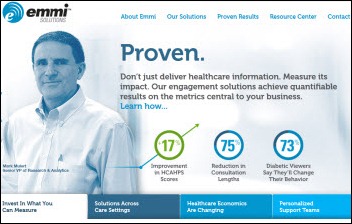
PE firm Primus Capital Funds invests in Emmi Solutions, a provider of patient engagement solutions.
MIT Media Lab spinout Atelion Health will commercialize one of the lab’s project, a care coordination system that’s being tested at Boston Medical Center, Joslin Diabetes center, and Mayo Clinic.

Cleveland-area data archiving vendor MediQuant, which says its revenue is growing at 45 percent per year, moves into a larger space for its 40 employees and the 10 additional it plans to hire this year.
A hedge fund shareholder of Compuware criticizes the company for “intentionally dragging your feet” by not yet responding to a $2.3 billion December 18 takeover offer from Elliott Management Corp. Just after it received that offer, Compuware announced plans to conduct an $200 million IPO of its Covisint HIE business unit by the end of March.
Sales
Centra Health (VA) selects Wolters Kluwer Health’s ProVation software for cardiology procedure documentation and coding.
HP Enterprise Services announces that it has been chosen by the VA for a $543 million, five-year, 152-hospital RTLS contract, being issued the bid again after competitor protests of last year’s award. Subcontractors are CenTrak, Intelligent InSites, and WaveMark.
People
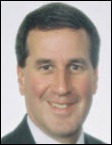
The Society of Health Systems and HIMSS award Dean Athanassiades, senior director of software customer services for Philips Healthcare, the 2012 SHS/HIMSS Excellence in Healthcare Management / Process Improvement Award for leadership in implementing synergies between the process improvement and IT professions.

Symphony Health Solutions names Frank Lavelle (Siemens Medical Solutions, Medquist) CEO.
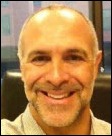
Doug Cusick (HP, IBM) joins Clinovations as a partner, tasked with leading the expansion of the company’s payer, life sciences, and technology service lines.

Dann Lemerand is promoted to EVP of strategic alliances for The HCI Group.
Announcements and Implementations
Greenway Medical Technologies unveils its interactive Developer Portal and API to facilitate creation of apps that interoperate with Greenway’s EHR and PM platform.
Siemens Healthcare offers consulting services for value-based purchasing, preventable readmissions, and healthcare-acquired conditions.

A Dell-sponsored study finds that the family medicine residency program of Tallahassee Memorial HealthCare (FL) saved $600,000 and enhanced productivity by implementing the company’s Mobile Clinical Computing solution, which includes desktop virtualization, single sign-on, and strong authentication.
Government and Politics

ONC selects four winners of its Health Design Challenge to develop patient-friendly designs for printed health records to help patients better understand and use their EHRs. The winners shared $31,000 in prize money.
ONC publishes several reports on HIEs.
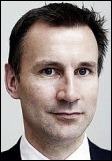
In the UK, Secretary of State for Health Jeremy Hunt calls on NHS to become paperless by 2018, making it “the most modern digital health service in the world.” The physician’s union replied, “The biggest challenges to making the NHS paperless by 2018 are down to funding, resources, prioritization, and the choice of systems in secondary care. Although there may potentially be some efficiency savings, technology will not necessarily create huge cost savings. As well as ongoing hardware and software funding, sufficient resources will be required to support evolving training, IT support and admin support.” Other goals the Secretary set: (a) every patient will have online access to their own records by March 2015; (b) referrals will be paperless; (c) patient records held in different locations will be linked; and (d) records will follow patients throughout NHS and social care.
Technology

A NIH-funded University of Pittsburgh study of four skin lesion apps finds that three of them weren’t very good at diagnosing a test set containing 53 images of lesions known to be cancerous. The apps incorrectly concluded that 30 percent of the lesions weren’t cancerous. The fourth app, which sends the image to a dermatologist for review, missed only one of the samples. The conclusion is to not trust unregulated apps with important medical decisions.
Other
The Leapfrog Group retracts the “F” grade it gave to Texas County Memorial Hospital (MO) after the hospital complains that its score was based on incorrect data. The 25-bed hospital opted not to participate in Leapfrog’s survey because it did not have the resources required to complete the 80-page questionnaire. It says Leapfrog applied “questionable methodology” and used information that was not confirmed by NQF or independently assessed for reliability and validity. The hospitals has retained legal counsel.
Siemens Health Services CEO John Glaser, who served as an ONC senior advisor helping craft Meaningful Use in 2009 while still VP/CIO at Partners HealthCare, agrees with several member organizations in calling for a slowdown of its rollout. He says, “The pace is too damned high. People are just cramming this stuff in.” Johns Hopkins Vice Provost for IT/CIO Stephanie Reel says the “one size fits all” approach is causing headaches for specialists and the Meaningful Use program needs to be evaluated for effectiveness, saying, “To keep moving ahead with such an aggressive strategy strikes me as foolish. We don’t know what’s working and what’s not working.” Obviously pushback is escalating.

Sporting Kansas City, partly owned by Neal and Cliff of Cerner, parts ways with its charity partner, Lance Armstrong’s Livestrong. ESPN says Livestrong cancelled the stadium-naming deal because the soccer team owed it money, while Sporting KC takes advantage of the Dope Pedaler headlines by loudly announcing the breakup with perfect timing. Livestrong’s name gets yanked down from the Livestrong Sporting Park sign and it loses its percentage of the gate, worth $8-10 million over six years.
An article in a security magazine says Australian security researcher have found “dangerous, unpatched flaws” in the Philips Xper cardiovascular imaging system that allow them free access to patient information. The researchers said they weren’t able to connect with someone at Philips, so they got in touch with the Department of Homeland Security and the FDA instead. They claim Homeland Security told them the agency was taking over all aspects of software vulnerabilities related to medical devices and software. Philips says the flaw is present only in old versions of its software. The researchers also played around with an iPad-based patient monitoring and found problems.
Lurie Children’s Hospital of Chicago sues a web design firm, seeking the return of the $859,000 it paid the company to design a site to promote its new $915 million hospital.

The Dallas paper profiles Robert Abbate, DO, who started One Touch EMR, an iPad-based EMR.
A reader once swore she would never read HIStalk again if I mentioned the term “fecal transplant” again, so here’s a sad but necessary wave goodbye to her from Weird News Andy, who subtitles the story “May I borrow some Grey Poopon?” A study finds that the unsavory procedure works better than antibiotics for treating diarrhea due to C. Diff. WNA adds, “When they figure out how to put them in a pill, maybe,” which I might argue is even more disturbing.
Sponsor Updates

- Columbia Valley Community Health (WA) chooses Access Evolution for creating and managing paperless forms and workflow.
- Craneware offers VP-and-above healthcare finance executives a chance to win a $250 Amazon gift card if they answer a 10-question Executive Industry Survey by February 5.
- HMS will participate in the HFMA Region 11 conference in Las Vegas January 27-30 and the THA 2013 Annual Conference February 13-14 in Austin.
- dbMotion shares the agenda for its February 7 seminar in Dallas on connected healthcare.
- Emdat adds Carmichael Business Systems, Northland Business Systems, and Integrated Data Technology as resellers of its digital dictation software.
- The Advisory Board Company offers an infographic that addresses accountability gaps and best practices for improving teamwork among frontline staff.
- The City of Springfield (OH) renews its contract with MED3OOO for EMS billing services through January 31, 2014.
- The US Army Network Enterprise Technology Command issues CommVault a Certificate of Networthiness for its Simpana 9 data and information management software.
- Santa Rosa Consulting’s Carl Jaekel discusses issues practices will need to consider to accommodate PCMHs in a blog post.
- T-System offers its T Sheets flu documentation template free to hospitals to help EDs manage the national flu epidemic.
EPtalk by Dr. Jayne
Every day is a good day to be anonymous, especially for the HIStalk team. Sometimes I marvel that I haven’t been outed at the office. I and am grateful that apparently I have enough of a filter so that my superhero identity isn’t revealed. I do have to be especially vigilant to ensure I’m logged into the correct Facebook and Twitter accounts so I don’t inadvertently post as the “wrong” me.
I’m just one of thousands of physicians using social media and was excited to see this article in the Annals of Internal Medicine. The authors sent hypothetical social media situations to various state medical boards to evaluate whether there was consensus on which situations might lead to a disciplinary evaluation. Not surprisingly, the riskiest posts included misleading clinical or credentialing information, using patient images without permission, and inappropriate contact with patients such as contacting them on dating sites. There was low consensus for sharing clinical anecdotes (as long as confidentiality was maintained) and for “showing alcohol use without intoxication.”

I do have some latent Victorian sensibilities, so I’m not sure photos of anyone drinking belong on Facebook. I have been friended by some of my colleagues and I think that either they have forgotten that their posts are visible to the workplace or perhaps they simply don’t care. Working for a conservative non-profit, I’d be a little concerned that those posts could someday be an issue (if not for the current workplace then for a potential or future employer.)
Many organizations have social media policies or codes of conduct, but it’s not a bad idea to find out if there are “informal” policies in play as well. Is it frowned upon for subordinates to “friend” their supervisors? Is there a difference between connecting on Facebook and connecting on LinkedIn? What about posting to social medial during typical business hours? Depending on an employee’s role and career goals, some of these are less than appropriate.
Having TMI (Too Much Information) seems to have become the norm. I’m not advocating for a return to the days of inkwells and quill pens, but I do miss having a little mystery in the world. I don’t need a photo of your lunch every day, unless of course if includes an awesome martini. If you have pictures of those, feel free to e-mail me.

Contacts
Mr. H, Inga, Dr. Jayne, Dr. Gregg, Lt. Dan, Dr. Travis.
More news: HIStalk Practice, HIStalk Connect.




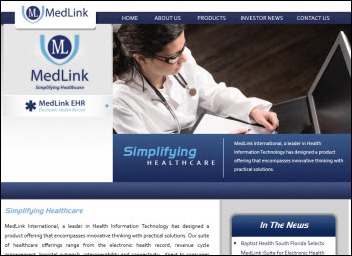













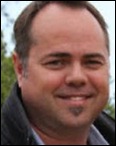


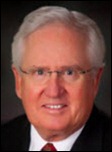
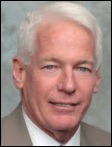
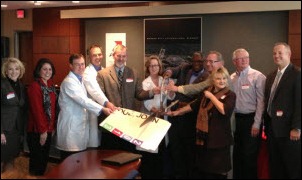







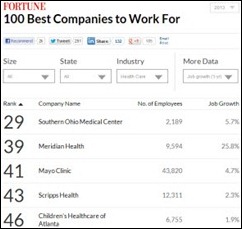


























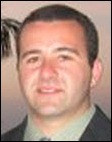
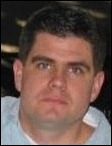
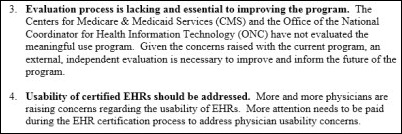

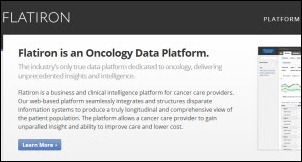



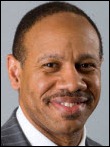
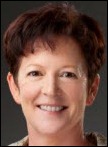
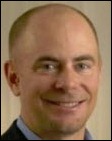


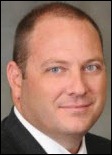
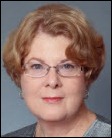
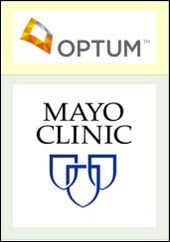

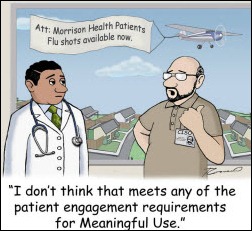
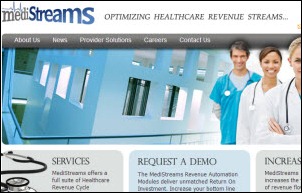
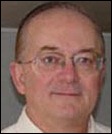

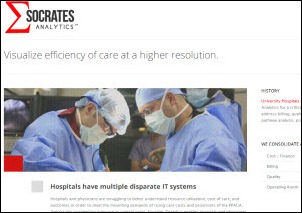






That, or we see if Judy will announce Epic's new Aviation module (probably called Kitty Hawk) that has integrated Cruise…